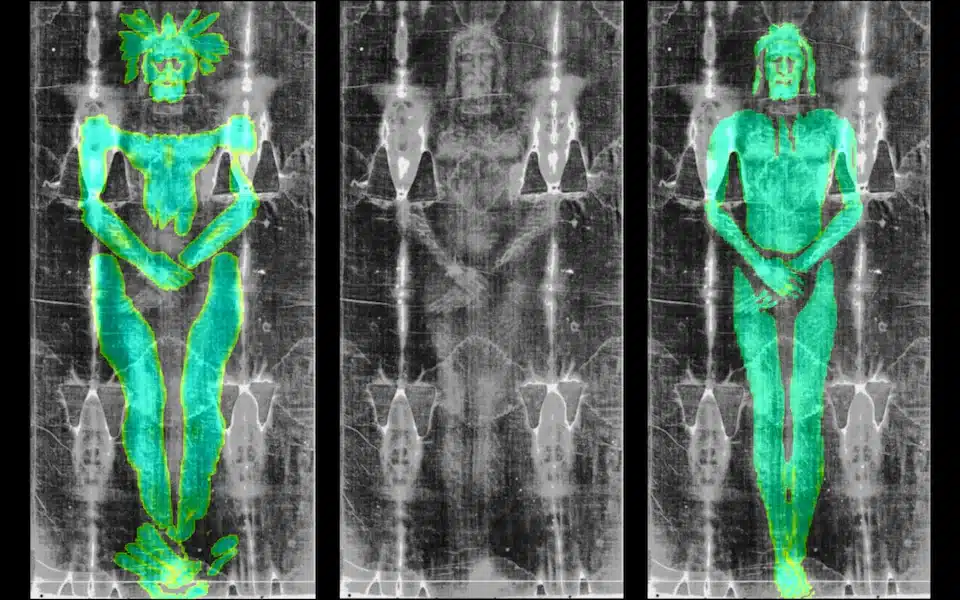A world expert in facial reconstruction has used computer software to demonstrate that the Shroud of Turin could not have enveloped the corpse of Christ.
The Shroud may not be genuine because the image of Christ imprinted on it should be more distorted than the famous image marked on the cloth had it actually been wrapped around Jesus's three-dimensional body, <a href="https://www.telegraph.co.uk/news/2024/10/30/graphics-shroud-of-turin-fake-christ-religion-italy/"><mark style="background-color:rgba(0, 0, 0, 0)" class="has-inline-color has-vivid-cyan-blue-color">reports</mark></a> the <em>Daily Telegraph</em>.
A flurry of recent studies into the Shroud of Turin have offered evidence that one of history’s most disputed artefacts does in fact date back 2,000 years, lending support to those who claim it is one of the most astonishing artefacts in existence, and countering previous claims that it is a medieval forgery.
But the new research by Cícero Moraes, reputed to be a world leader in forensic facial reconstruction software, has demonstrated that even if the cloth is 2,000 years old, it could not have covered the actual body of Jesus due to the image on the shroud being, in effect, normal sized.
Using 3D software, Mr Moraes built a virtual simulation in which "fabric" was fitted over a body to replicate the shroud covering Jesus. After being “taken off” the body and laid flat, the image left on the cloth was substantially distorted, as if stretched longways, at odds with the image of the body on the Shroud of Turin which shows the body of a slim, normally proportioned man.
The expert found the image on the shroud could only be created if a cloth was placed over a bas-relief of a human figure, such as a shallow stone carving, reports the <em>Telegraph</em>.
“When you wrap a 3D object with a fabric, and that object leaves a pattern like blood stains, these stains generate a more robust and more deformed structure in relation to the source,” Moraes said.
“So, roughly speaking, what we see as a result of printing stains from a human body would be a more swollen and distorted version of it, not an image that looks like a photocopy.
“A bas-relief, however, wouldn’t cause the image to deform, resulting in a figure that resembles a photocopy of the body.”
Mr Moraes explains the image that should appear on the shroud would be very different to the normal-sized one that is on it – comparing the stretched-out appearance that would occur to the phenomenon known as the “mask of Agamemnon” effect – with the face, scalp and toes splaying out. In addition, large parts of the torso, groin and neck would not have shown up at all, according to his research.
Recently, new scientific tests conducted on the famous Shroud of Turin offered support to those hoping that it is indeed the cloth that was used to cover the body of Jesus when it was placed in the tomb after the crucifixion.
One study <a href="https://catholicherald.co.uk/new-evidence-indicates-turin-shroud-not-a-european-forgery/"><mark style="background-color:rgba(0, 0, 0, 0)" class="has-inline-color has-vivid-cyan-blue-color">revealed</mark></a> that the flax used to make the linen was grown in the Middle East. The results of these isotope tests provided new evidence that the shroud could be the actual garment that was used to cover the body of Jesus Christ following His crucifixion – and not a forgery that was created in medieval Europe, as previously claimed by some.
This was followed by a study that analysed the blood stains on the Shroud of Turin and <a href="https://catholicherald.co.uk/another-turin-shroud-study-released-bloodstains-consistent-with-crucifixion-of-christ/"><mark style="background-color:rgba(0, 0, 0, 0)" class="has-inline-color has-vivid-cyan-blue-color">found them to be consistent</mark></a> with Jesus’s experience before and during His crucifixion and with the subsequent removal of His body for burial.
These most recent studies helped compound the findings of earlier studies conducted in 2012 and 2015 – and all providing support for the Shroud being genuine – that found the linen sheet probably does date from the time of Jesus.
In 2017, a team from the Hospital University of Padua, Italy, led by Matteo Bevilacqua, conducted a forensic study of the imprint, and found it was of a person who suffered and died in exactly the same manner that Christ did as recorded in the Gospels.
Cícero Moraes has said that when it comes to the unceasing debate about the Shroud's providence and how it is viewed, "people generally fall into two camps in the debate” – being for or against it being genuine – while he says that he sees it another way.
“On one side are those who think it is an authentic shroud of Jesus Christ, on the other, those who think it is a forgery. But I am inclined towards another approach: that it is in fact a work of Christian art, which managed to convey its intended message very successfully.
“It seems to me more like a non-verbal iconographic work that has very successfully served the purpose of the religious message contained within.”
Mr Moraes is publishing his study in the Elsevier preprint repository ahead of formal academic publication, the <em>Telegraph</em> notes.
<em>Photo: Cicero Moraes’ photograph shows the impression left upon fabric by a 3D body (left) and by a shallow bas-relief (right) while the Shroud of Turin image is seen in the centre. (Credit: Cicero Moraes/Pen News.)</em>



